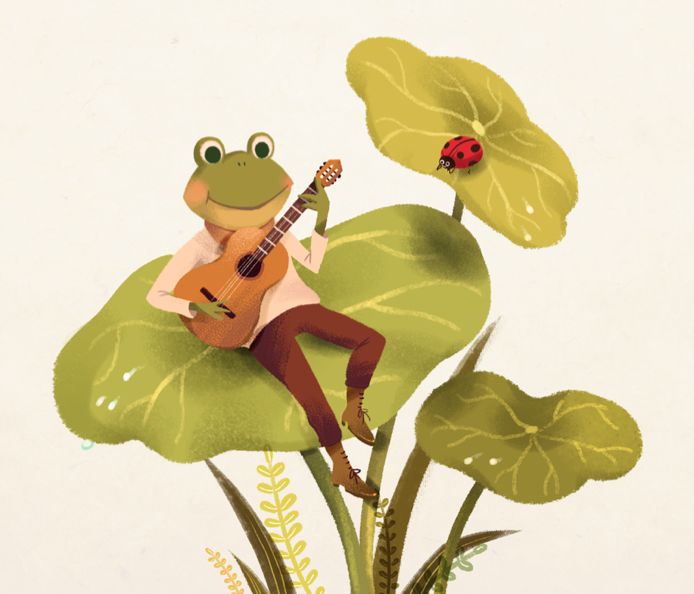Everybody knows that frogs love to sing. We're all gifted in that department but when it comes to playing a musical instrument? Not so much. Ever since I was a young tadpole, I've wanted to play the guitar. Like most young frogs, I dreamed of playing in a rock band. But, so far, that hasn't happened. But with three days off, I've decided to take lessons. There's no time like the present to learn something new. I purchased a guitar and have booked a few lessons with Lily Pad's guitar virtuoso. As I like to do before starting any big project, I took a little time and to learn the history of guitars. I found that this lovely instrument has a long and stellar past.
The guitar is both ancient and noble. It's history goes back 4,000 years. There are many versions of it's early history, including one that says it developed from the lute. But research done as recently as the 1960's proves these claims to be false. It is believed, however, that the modern guitar's forefathers were the Greek Kithara, although that, too, seems unrealistic, as the kithara is a square-shaped lap harp, or lyre. The earliest known stringed instruments are the bowl harps and tanburs. These two instruments have been around since the days of prehistory humans. The world's museums contain a rich collection of these "harps" from Sumerian, Babylonian, and Egyptian civilizations. Around 2500 - 2000 CE, more advanced harps began to appear. Many of these "later" instruments have survived into modern times and are almost unchanged. If we look at folk instruments from the Middle Eastern regions of the world, we can see very similar instruments still being played today.
The oldest preserved guitar-like instrument is 3500 years old. It belonged to Egyptian singer Har-Mose. He was buried with his instrument close to his side. That instrument had a long neck and three strings. The soundbox was crafted of beautifully polished cedarwood. It's on display at a museum in Cairo. Now I'd call that the ultimate vintage guitar!
The name guitar comes from the Sanskrit word "tar" which means string. And many versions of stringed instruments do originate from Central Asia. The most commonly known one is the Indian sitar, made famous in the mid-1960's by the Beetles. Most of these old instruments had four strings and came to Europe from Egypt and Mesopotamia. The Persian word "chartar" means, in direct translation "four strings."
If we fast-forward to Medieval times, many such instruments (and variation of them) had three to five strings. By the beginning of the Renaissance, the four-course guitar (4 unison-tuned pairs of strings) had become dominant. The standard tuning had already settled at A, D, G, B, E. These early guitars had eight frets free of the body, but as the guitar continued to evolved, the number of frets increased first to ten, and then to twelve frets to the body.
The modern classical guitar took its present form when the Spanish guitar-maker Antonio Torres increased the size of the body, altered its proportions, and introduced the revolutionary "fan" top bracing pattern around 1850. His design radically improved the volume, tone, and projection of the instrument.
The electric jazz guitar was born when pickups (transducers) were added to Hawaiian and jazz guitars in the late 1920's. These early electric guitars met with little success until Lloyd Gibson introduced the ES150 model in 1936. And with the advent of amplification, well, as they say, the rest is history.
I'm excited to learn to play the guitar and I think it'll be fun to lay around the ol' lily pad and play music. It might actually improve my singing, too. Who knows? I may write a hit song one day and start that rock band after all! Whatever your plans are for this holiday weekend, stay safe and have fun.
I'll see you all back here on Tuesday!

 RSS Feed
RSS Feed